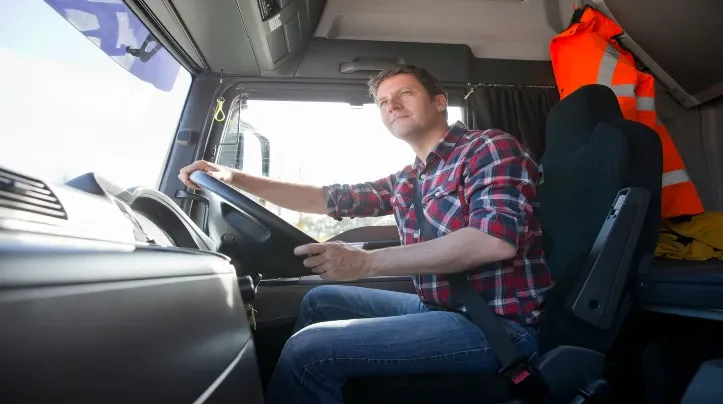
The Driving and Vehicle Licensing Agency (DVLA) will now allow people with diabetes who hold Group 2 licences to use continuous glucose monitoring to monitor their blood glucose levels when driving.
The DVLA, which looks after driving rules for England, Scotland and Wales, updated their rules in 2019 to allow people with diabetes who hold Group 1 licences for cars and motorcycles to use continuous glucose monitors (CGM).
This change now brings the rules for those who drive larger vehicles – such as buses, coaches and lorries – in line with this.
We have campaigned for these changes to be made and welcome this important decision, which will make it easier for drivers with diabetes to use their tech to check their glucose levels and reflects the latest advances in clinical care and self-management.
What has changed?
DVLA rules say Group 2 licence holders with diabetes who use insulin or some other medications that risk hypos must check their blood sugars no more than two hours before each journey —and then every two hours of the journey.
Previously this had to be done using a finger-prick blood glucose meter, but the new rules in place from today allow drivers to use CGM for easier, real-time glucose readings.
Drivers should use a CGM device that is approved for making decisions about treatment based on the CGM readings alone, without a back-up finger-prick test.
However, drivers must still pull over safely to confirm their readings, and carry a finger-prick test as a back-up in case a CGM stops working or gives readings that don't match the way they feel.
Drivers can also still use finger-prick tests to monitor their glucose levels if they prefer.
Read our full guide on driving with diabetes and our guide on diabetes and your driving licence.
Our role in the journey
These new rules will allow all drivers with diabetes who use insulin, and other medication that risks low blood sugar, also known as hypos, to monitor their glucose levels with CGM tech that offers added safety and convenience.
We have long-called for people with diabetes who drive buses, coaches and lorries to be provided with the benefits of using CGM.
As well as updating the rules for all drivers with diabetes to reflect advances in diabetes tech, this will provide thousands of professional drivers with more flexibility in how they self-manage their diabetes at work.
It will also make it easier for drivers with diabetes to retain their driving licence which they have to renew every year, following a rigorous independent medical assessment.
We responded to a DVLA consultation in strong support of this change, which was also backed by 89% of respondents and a range of groups including medical experts, road safety organisations and the haulage industry.
Nikki Joule, Policy Manager at Diabetes UK, said:
“This welcome change will make a huge difference to the lives and livelihoods of professional drivers who manage their diabetes using insulin.
“Diabetes technology such as continuous glucose monitors can be transformative for people with diabetes, improving how the condition is managed and helping people live full lives.
"We have long been calling for these measures to be expanded since they were first introduced for car and motorcycle licence holders. Today's announcement will support many bus and lorry drivers to safely manage their condition while working."
You can read the guidance on the new rules at: www.gov.uk/diabetes-driving
If you have any concerns or need advice about driving with diabetes, contact our helpline.
